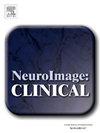Unraveling SNAP: distinct patterns of early neurodegeneration through MRI texture analysis
IF 3.4
2区 医学
Q2 NEUROIMAGING
引用次数: 0
Abstract
Aim
Suspected non-Alzheimer’s disease pathophysiology (SNAP) is a condition characterized by neurodegeneration in the absence of amyloid beta (Aβ) deposition, posing challenges for early diagnosis. This study aimed to investigate the progression of neurodegeneration in SNAP through the analysis of brain MRI volume and texture.
Methods
The study included 449 amyloid-negative participants categorized into three groups: cognitively normal without neurodegeneration (N-CN), cognitively normal with neurodegeneration (N + CN), and MCI with neurodegeneration (N + MCI). Volume and texture metrics were derived from T1-weighted MRI. Texture analysis quantified microstructural changes using grey level co-occurrence matrices, while volume metrics measured atrophy.
Results
Texture changes were observed earlier and more widely than volume reductions. In N + CN, texture changes were present in the hippocampus, entorhinal cortex and orbitofrontal cortex. In N + MCI, texture changes extended to frontal and subcortical regions, including the thalamus and putamen, while volume reductions extended to the lateral temporal cortex and amygdala.
Conclusions
Texture analysis is a sensitive tool for detecting early neurodegenerative changes in SNAP, capturing microstructural changes preceding volume loss. By integrating texture and volume metrics, this study highlights a distinct neurodegenerative trajectory in SNAP. Future research should validate these findings longitudinally and explore the clinical application of texture metrics.
解开SNAP:通过MRI结构分析早期神经退行性变的独特模式
疑似非阿尔茨海默病病理生理(SNAP)是一种以缺乏β淀粉样蛋白(a β)沉积的神经变性为特征的疾病,对早期诊断提出了挑战。本研究旨在通过脑MRI体积和质地分析SNAP神经退行性变的进展。方法将449例淀粉样蛋白阴性受试者分为认知正常无神经变性(N-CN)、认知正常伴神经变性(N + CN)和认知正常伴神经变性(N + MCI)三组。体积和质地指标来自t1加权MRI。织构分析使用灰度共现矩阵量化微观结构变化,而体积度量测量萎缩。结果观察到的结构变化比体积减少更早、更广泛。N + CN组海马、内嗅皮质和眶额皮质均出现织构变化。在N + MCI中,质地变化扩展到额叶和皮层下区域,包括丘脑和壳核,而体积减少扩展到外侧颞叶皮层和杏仁核。结论结构分析是检测SNAP早期神经退行性改变的灵敏工具,可捕获体积损失前的微结构变化。通过整合纹理和体积指标,本研究强调了SNAP中不同的神经退行性轨迹。未来的研究应纵向验证这些发现,并探索纹理指标的临床应用。
本文章由计算机程序翻译,如有差异,请以英文原文为准。
求助全文
约1分钟内获得全文
求助全文
来源期刊

Neuroimage-Clinical
NEUROIMAGING-
CiteScore
7.50
自引率
4.80%
发文量
368
审稿时长
52 days
期刊介绍:
NeuroImage: Clinical, a journal of diseases, disorders and syndromes involving the Nervous System, provides a vehicle for communicating important advances in the study of abnormal structure-function relationships of the human nervous system based on imaging.
The focus of NeuroImage: Clinical is on defining changes to the brain associated with primary neurologic and psychiatric diseases and disorders of the nervous system as well as behavioral syndromes and developmental conditions. The main criterion for judging papers is the extent of scientific advancement in the understanding of the pathophysiologic mechanisms of diseases and disorders, in identification of functional models that link clinical signs and symptoms with brain function and in the creation of image based tools applicable to a broad range of clinical needs including diagnosis, monitoring and tracking of illness, predicting therapeutic response and development of new treatments. Papers dealing with structure and function in animal models will also be considered if they reveal mechanisms that can be readily translated to human conditions.
 求助内容:
求助内容: 应助结果提醒方式:
应助结果提醒方式:


